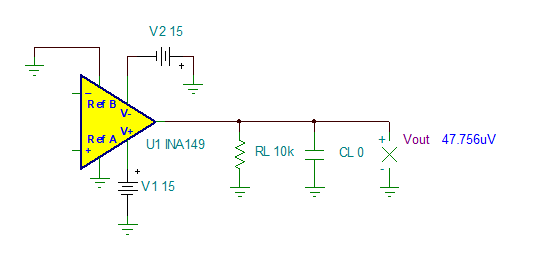Hi, Staff
We are evaluating INA149.
Please confirm below.
The circuit configuration of INA149 data sheet (SBOS579B) page13 Figi43 is evaluated.
What kind of voltage does Vout output when both the -IN and +IN input terminals are open?
As a result of evaluation, Vout is confirmed to be +13.5V or -13.5V.
best regards
cafain


